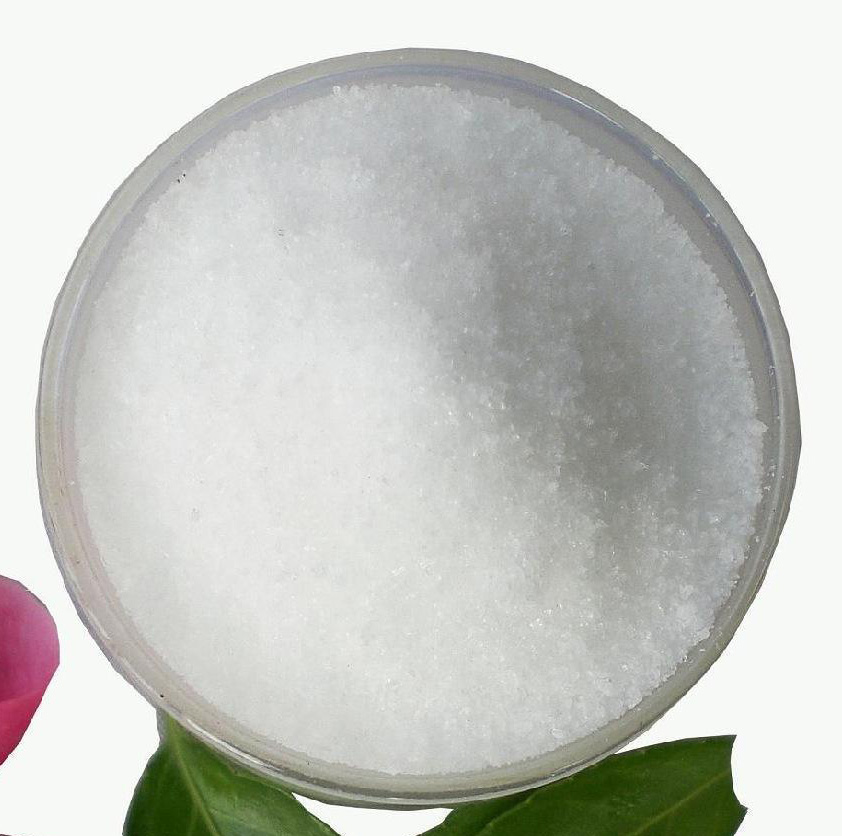BRIEF INTRODUCTION:
L-Arginine is one of the common 20 kinds of amino acids in human protein. Because of the existence of guanidine, arginine is alkaline and easily reacts with acid to form salt. It can soluble in water (15%, 21℃), insoluble in ether, slightly soluble in ethanol. At present, its product types are mainly arginine and arginine hydrochloride. For the adult is not essential amino acid, but in vivo production rate is slow, for infants and toddlers as essential amino acids, have a certain detoxification. Natural products are abundant in fish protamine, and also for the basic composition of a variety of proteins, so there is a very wide range. Arginine, besides participating in the synthesis of cell proteins, as a precursor of nitric oxide (NO) and polyamine and other active substances, arginine is an important intermediate product of urea circulation, and arginine and its derivatives, ornithine and glycine, have a good effect on the treatment of clinical high blood ammonia.
PRODUCT IDENTIFICATION:
Chemical names: (S)-2-amino-5-guanidinopentanoic acid
Synonyms: Arginine, L-Arginine
CAS No.: 74-79-3
FEMA: 3819
Empirical formula: C6H14N4O2
Molecular mass: 174.20
APPLICATION:
L-arginine as an amino acid drug, used in all types of liver coma bogey with glutamate sodium and viral hepatitis C transaminase abnormal population. For nutritional supplements, is an important component of amino acid infusion and synthetic amino acid preparation. L-arginine as a pharmaceutical intermediate can be used for the production of amino acid compound salts such as L-arginine-α-ketoglutaric acid. L-arginine prepared from starch as raw material by fermentation and extraction can be used as food additive. As a health care product, can improve heart and brain blood supply, improve immunity and other functions.
TECHNICAL SPECIFICATIONS:
|
Standard |
|
|
Identification |
Meets the requirements |
|
Description |
White crystals or crystalline powder |
|
Bulk density (g/ml) |
0.5-0.7 |
|
Loss on drying (%) |
≤0.5 |
|
Residue on ignition (%) |
≤0.3 |
|
|
+26.3°~+27.7° |
|
L-Arginine (dry basis, %) |
98.5-101.5 |
|
Iron (%) |
≤0.003 |
|
pH |
10.5-12.0 |
|
Arsenic (%) |
≤0.0001 |
|
Chloride (%) |
≤0.05 |
|
Heavy metal (%) |
≤0.0015 |
|
Individual impurity (%) |
≤0.5 |
|
Total impurity (%) |
≤2.0 |
|
Lead (ppm) |
≤3 |
|
Mercury (ppm) |
≤0.1 |
|
≤1 |
|
|
Yeast (cfu/g) |
≤50 |
|
Mold (cfu/g) |
≤50 |
|
Coliforms (MPN/g) |
≤1 |
|
Total plate count (cfu/g) |
≤1000 |
|
Pathogenic bacteria (salmonella, Shigella, staphylococcus aureus) |
Not detected |
PACKAGE:
25kgs drum, 9MT of each 20 feet container with pallets and 11.5MT without pallet.
STORAGE AND TRANSPORTATION:
The product should be stored on the pallet, in a light-proof, well-closed, cool, dry and ventilated place (at a temperature of ≤23℃ and a relative humidity of ≤60%). Following the above guidelines should insure 12-month shelf life. After opening the original packing, the complete content should be used immediately. Material can be microbiologically contaminated from unhygienic environment. It is a non-dangerous product and can be transported as a common chemical product. Protect them from sunshine or rain. Must not be loaded and transported with toxic, hazard outstand polluting substances. Handle with care in order to avoid damaging the package.
QUALITY AND SAFETY ASSURANCE:
Controlled under certified quality system ISO and product safety is ensured by established safety system.
TEST METHOD: Full details and test method are available on request.
 Tel: +86-532-86990169|
Tel: +86-532-86990169| Email: sales@dailyfoodgroup.cn
Email: sales@dailyfoodgroup.cn

